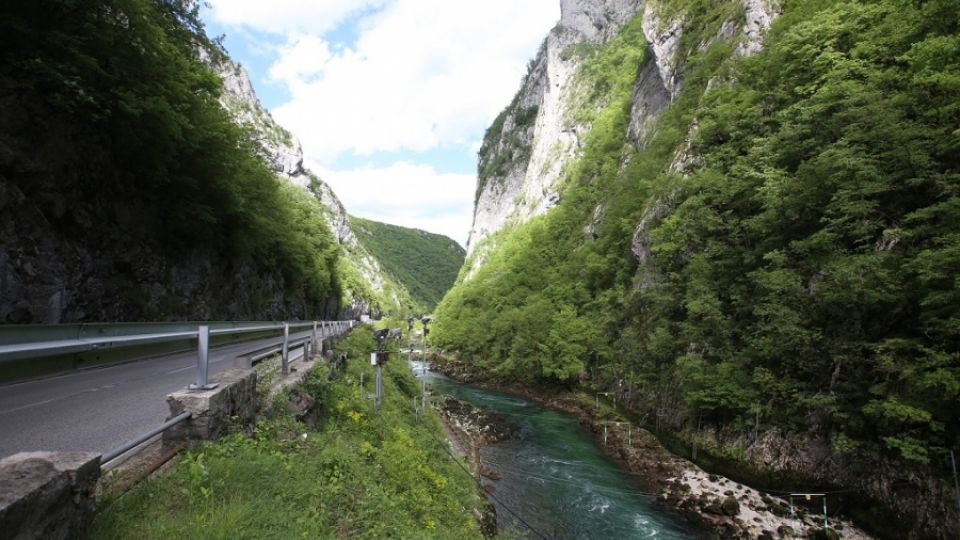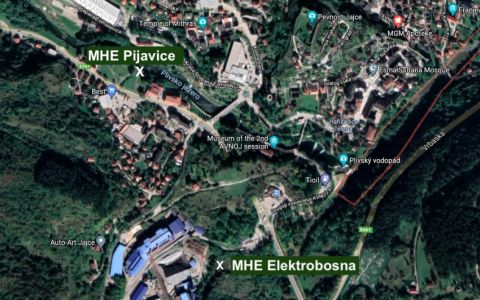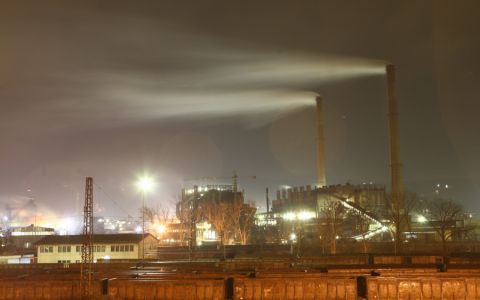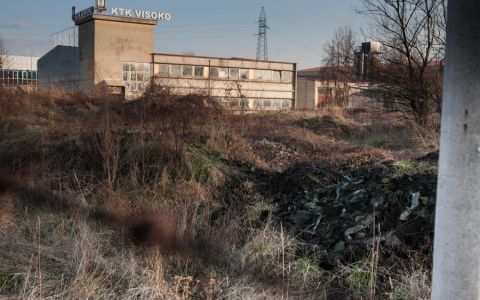In October 2018, in Mrkonjić Grad on the River Vrbas, the Bočac 2 hydro power plant (HPP) was put into operation. Prior to the completion of the construction, the company "Hidroelektrane na Vrbasu" had already requested a new concession for the construction of yet another hydro power plant, called "Krupa." In addition to the existing hydro power plants on the Vrbas River, the construction of the Grbić HPP downstream from the village of Krupa on Vrbas and another HPP in the village of Babin Potok is planned.
At the beginning of 2018, the Minister of Energy and Mining of Republika Srpska, Petar Đokić, and the director of the Saint Petersburg company "Rakurs inženjering," Leonid Černigov, signed an agreement on cooperation on the realization of a project for constructing a cascade of medium-sized hydro power plants on the Vrbas River worth 500 million Euros. Four hydropower plants should be constructed near the villages of Trn, Laktaši, Kosjerovo, and Razboj.
About the Vrbas River
The Vrbas is a 250-kilometer long river that has its source under the Zec Mountains and flows into the Sava River at the town of Sprbać. The Vrbas river basin has an area of 5900 square kilometers and about 500 thousand people live on its banks. From the city of Banja Luka to the Vrbas, the canyon and numerous gorges are protected under the 1955 law on the protection of natural values.
The Vrbas River has 36 direct tributaries over 10 kilometers long, the most important of which are the Pliva, Ugar, Crna rijeka, and Vrbanja. The tributaries of the Vrbas are known for their rich freshwater fish diversity and the Vrbas itself for the presence of 22 fish species. The most common species that can be found in the upper course are trout, grayling, and the huchen. Their presence is evidence of the exceptionally high quality of the water.
Throughout its entire course, the Vrbas River has ideal conditions for the development of high biological diversity. The cliffs of the Vrbas Canyon are home to eagles, falcons, and hawks. The canyon of the Vrbas River is also a paradise for rafters, kayakers, and canoeists, as well as for anglers.
Krupa HPP
The project for the Krupa HPP (14 MW) is planned to have an 18-20-meter high wall. The accumulation lake would flood and the road along the canyon that serves as an important traffic artery. The relocation of the 10 kilometer-long part of the road from the left to the right bank would be a necessity.
At the end of November 2017, the diverse group of local people, journalists, representatives of the ecological NGO Center for Environment, the construction company, and the investor gathered on the Krmnog bridge over the Vrbas River. The participants were responding to an invitation to a tribute to the citizens of the local community in Krupa on Vrbas.
Viktor Bjelić from the Center for Environment was the project of the city of Banja Luka, the Republic of Serbia, and the state of Bosnia and Herzegovina.
Upstream from Banja Luka, the Vrbas River has a great fall and self-purification power, and therefore, the construction of any dam that would lead to the deterioration of the water quality and the threat to the water supply of the citizens of Banja Luka. In addition, another dam would threaten the presence of the Danube salmon, the giant species that is endangered and endemic to the Danube basin.
The citizens of Krupa on Vrbas raised their voices too and expressed their dissatisfaction with the planned construction of the HPP, and emphasized that they would benefit from the "Bočac 1" and "Bočac 2" hydro powerplants and that they would not benefit HPP. In their opinion, the hydro powerplant would bring only harm; so they explicitly declared that they would not give up their land for the construction of the Krupa HPP.
In June 2018, the local community [1] of Krupa on Vrbas voted on the project for the Krupa HPP with a clear negative result when six of the seven members raised their hands against it.
2004 Fight For The Vrbas
The fight against the destruction of the Vrbas River has lasted for more than a decade. In 2004, the Government of the Republic of Srpska signed a contract worth 165 million Euros for the construction of two HPPs on the Vrbas River, the Krupa and Banja Luka – Niska HPPs. It was followed by an immediate and strong reaction on the part of the civic society. The Coalition for the Protection of the Vrbas River collected over 17,000 signatures against hydro powerplants on the Vrbas River. The local government of Banja Luka gave a negative opinion and the HPPs were never constructed.
Let's protect our rivers
Numerous ecological associations from all over Bosnia and Herzegovina have joined the defense of the Vrbas River. The Vrbas is not the only river that is under threat, though. Over the years, activists, ecologists and locals have jointly managed the construction of hydro power plants on the Rivers Sutjeska, Hrčavka, Kruščica, Neretva, Ljuta, Buna, Una, Unac, Željeznica, Vrbas, and others.
Bosnia and Herzegovina ranks first in the Western Balkans region and seventh in Europe. Numerous thermal and sulfur springs have great potential for the development of spa tourism, which is as yet little developed.
And while in Bosnia and Herzegovina the rivers are being destroyed, they are torn down in some of the European countries where they realized that hydro energy is not equal to green energy, as previously thought.
[1] What is called the "local community" is a specialty of citizens that has an advisory vote in local government.







